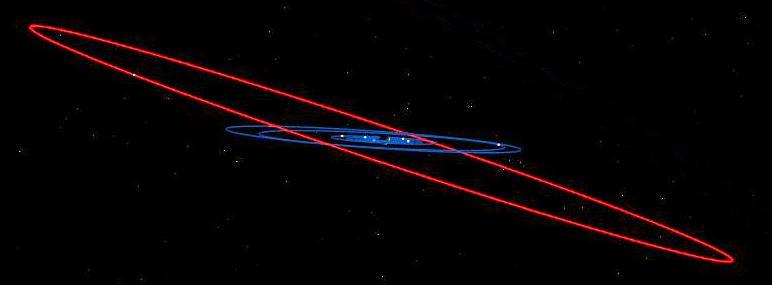
What a strange world Iapetus is! The third largest satellite of Saturn—and the outermost of Saturn’s large satellites—is a moon of many mysteries. We’ll take a look at three of them.

Mystery #1: Iapetus appears to be an original satellite of Saturn, and yet unlike the other regular satellites, its orbit is inclined 15.5˚ relative to Saturn’s equator. The reason for this steep inclination is not well understood.

And, oh, the view! Iapetus is the perfect perch to view Saturn’s rings, as it orbits Saturn every 79.3 days in its steeply inclined orbit.

Mystery #2: Iapetus has the largest albedo dichotomy in the solar system. Why? Iapetus is locked in synchronous rotation as it orbits around Saturn, with the leading hemisphere ten times darker than its trailing hemisphere.


It is thought that the natural state of the Iapetian surface is the bright icy part, with the dark material a thin veneer, less than a meter thick.
Mystery #3: Iapetus has a shape consistent with a body spinning every ~16 hours and yet its rotation period is 79.3 days, and it has a prominent ridge that can be followed 3/4 of the way around the equator.


The surface of Iapetus is heavily cratered, indicating it is very old. Could two comparable-sized objects have collided almost head-on billions of years ago to form Iapetus?

As beautiful as spacecraft flyby and orbital images are of Iapetus and the many other interesting moons in our solar system, can you imagine what vistas await us once we start exploring their surfaces with rovers? Anticipation of these images and scientific discoveries surely is an impetus to explore the surface of Iapetus (and other moons) sooner rather than later.


References
Bonnefoy, Léa E., Jean-François Lestrade, Emmanuel Lellouch, Alice Le Gall, Cédric Leyrat, Nicolas Ponthieu, and Bilal Ladjelate. “Probing the subsurface of the two faces of Iapetus.” arXiv preprint arXiv:1911.03394 (2019).
Leleu, Adrien, Martin Jutzi, and Martin Rubin. “The peculiar shapes of Saturn’s small inner moons as evidence of mergers of similar-sized moonlets.” Nature astronomy 2, no. 7 (2018): 555-561.
Rivera-Valentin, Edgard G., Amy C. Barr, EJ Lopez Garcia, Michelle R. Kirchoff, and Paul M. Schenk. “Constraints on planetesimal disk mass from the cratering record and equatorial ridge on Iapetus.” The Astrophysical Journal 792, no. 2 (2014): 127.